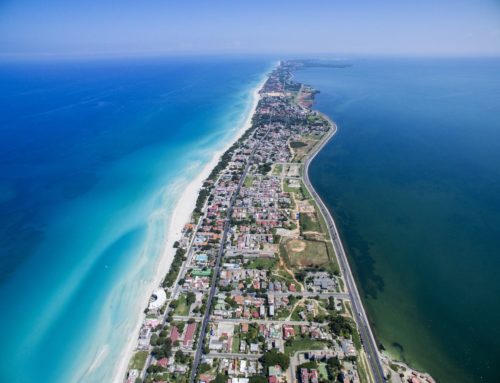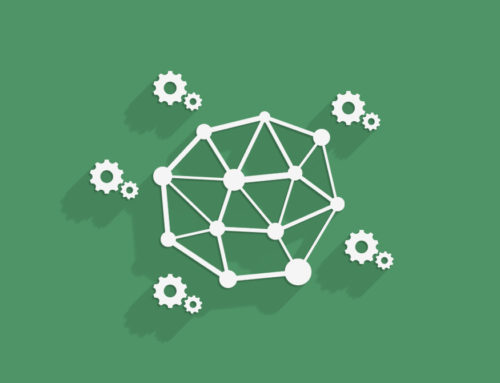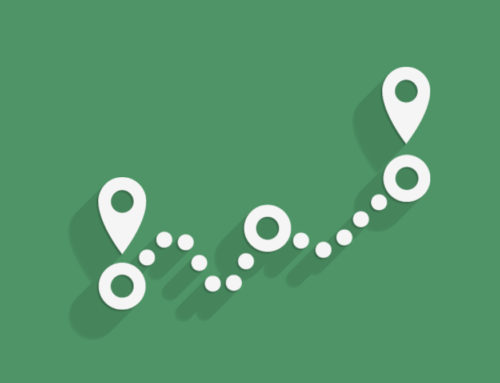The Anthropocene
The concept of the Anthropocene engenders a fundamental recognition to the level of human intervention within earth’s systems
The name Anthropocene is a combination of the Greek root “anthropo” meaning “human” and “cene” meaning “new.” As a scientific term it is used to refer to the current geological epoch where human beings are identified as the primary effectors of changes within earth’s systems.1 Geologic epochs are distinguished from one another based on geological observations, such as the composition of sediment layers and other tools of paleoclimatology. To justify the identification of a new Anthropocene epoch, it must, therefore, be demonstrated that evidence of anthropogenic global change is present at such a level that it can be distinguished using geologic indicators despite natural variability in these across the Holocene.
Acceptance
According to the International Union of Geological Sciences, the professional organization in charge of defining earth’s time scale, we are officially in the Holocene epoch, which began 11,700 years ago after the last major ice age which is marked by an exceptionally stable climate and benign environment for the development of human civilization. But some experts say this label is outdated, arguing for the term Anthropocene because of the scale of anthropogenic influence. Since the introduction of the term in the 1980’s it has been taken increasingly seriously, and today steps are currently being taken by independent working groups of scientists from various geological societies to determine whether the Anthropocene will be formally accepted into the Geological Time Scale.
Added to the contestation surrounding the formal acceptance of the term, the Anthropocene also has no agreed upon start date, instead there are typically three different periods in human civilization cited as forming its origins; the neolithic revolution, the industrial revolution or the more current transformation, sometimes called the great acceleration.
Neolithic
William Ruddiman among others has argued that the proposed Anthropocene began approximately 8,000 years ago with the development of farming and sedentary cultures. At this point, humans were dispersed across the continents, and the Neolithic Revolution was ongoing. The Neolithic Revolution was a fundamental change in the way people lived. The shift from hunting & gathering to agriculture led to permanent settlements, the establishment of social classes, the eventual rise of urban living and large civilizations. During this period, the critical change in technological and economic organization was the development of agriculture and animal husbandry to supplement or replace hunter-gatherer subsistence. Such innovations were followed by a wave of extinctions, beginning with large mammals and land birds. This wave was driven by both the direct activity of humans through hunting and the indirect consequences of land-use change for agriculture.
Industrial Revolution
The Industrial Revolution had a profound effect on agriculture, the relation between human society and environment disrupting many traditional feedback loops that had developed over thousands of years, the implications of which we are still living with today
Some scientists propose that, based on atmospheric evidence, the beginnings of the Anthropocene should be dated back to the start of the Industrial Revolution in the late seventeen hundreds. The large-scale combustion to the energy sources of coal, oil and gas enabled the transition to new manufacturing processes as they shifted from manual to mechanical. The ecologist James Lovelock proposes that the Anthropocene began with the first application of the Newcomen atmospheric engine in 1712. Until then, the highest level of energy available throughout human history had been limited to 1 kW per square meter, from the sun.
With the development of modern industrial technologies historical feedback loops between economic and ecological systems that had co-evolved over thousands of years were rapidly dislocated. Before the Industrial Revolution, people were very much aware of their environmental limitations. Their culture, values, knowledge, technology, social organization and other parts of their social system were by necessity closely adapted to nature. Most people were small-scale subsistence farmers; most of the agricultural production was for home consumption. Most families had a variety of farm animals and cultivated many different crops to meet the family’s needs for food and clothing. Agricultural techniques were adapted to local environmental conditions. The amount of land that each family could cultivate was limited by the large amount of human or animal labor that was necessary for agriculture. Most farmers used polyculture - a mixture of several crops together in the same field.
Industrial Agriculture
Agriculture changed in Europe when the Industrial Revolution made it possible to use machines instead of human and animal labor for work such as plowing fields and harvesting crops. Starting with mechanization, the chain of effects can be traced through as machines gave farmers the ability to cultivate larger areas of land. Farm sizes increased dramatically as mechanized agriculture is more efficient on a larger scale. These initial changes in technology, economy, society and ecology set in motion a series of changes such an increasing economies of scale, commodification and urbanization that through interconnected feedback loops continues to this day in many countries around the world. Although it is apparent that the Industrial Revolution ushered in an unprecedented global human impact on the planet it can be equally seen as yet another stepping stone to the extraordinary exponential growth of human activity that began in the mid 20th Century.
The Great Acceleration
The second half of the 20th Century is unique in the history of human existence. Many human activities reached take-off points sometime in the 20th Century and sharply accelerated towards the end of the century. This period is called the great acceleration or global change referring to unprecedented human-induced planetary-scale changes in Earth’s systems. The last 60 years have without doubt seen the most profound transformation of the human relationship with the natural environment in the history of humankind. Human activity, predominantly in the form of the global economic system, is now the prime driver of change in the Earth System. This is made most explicit with reference to the recent publication of a set of 24 global indicators, sometimes called the “planetary dashboard” that was published in 2015.2 In this report twelve indicators depict human activity, for example, economic growth in GDP, population, foreign direct investment, energy consumption, water etc. Twelve indicators show changes in major environmental components of the Earth System, for example, the carbon cycle, nitrogen cycle, and biodiversity. With all graphs showing an exponential increase starting around the middle of the last century.
Comments
Professor Will Steffen the lead author on the project had this to say about it; “It is difficult to overestimate the scale and speed of change. In a single lifetime humanity has become a planetary-scale geological force,” he added “After 1950 you can see that major Earth System changes became directly linked to changes largely related to the global economic system. This is a new phenomenon and indicates that humanity has a new responsibility at a global level for the planet,” The new paper argues that, “Of all the candidates for a start date for the Anthropocene, the beginning of the Great Acceleration is by far the most convincing from an Earth System science perspective. It is only beyond the mid-20th century that there is clear evidence for fundamental shifts in the state and functioning of the Earth System that are beyond the range of variability of the Holocene, and driven by human activities and not by natural variability.”
Dynamics
Although there is every little we can say about the future to the Anthropocene we can say some things about the current state using the language of nonlinear systems dynamics. We could tentatively say that earth’s systems are going through a likely irreversible phase transition, broken negative feedback loops, and increased positive feedback have taken it far-from-equilibrium into what appears to be some form of a critical bifurcation state. The outcome of which will be either some form of ecological collapse into a degraded equilibrium or self-organization to some other new higher equilibrium. We could also say that the outcome of that process will likely be determined within the coming decades and it will likely be a product of the economic choices made. As we know in these periods of transition close to a bifurcation the system can become very sensitive to small fluctuations. During this period both the global economy and global biosphere appear highly vulnerable.
Tipping Points
The melting of polar ice caps is one possible tipping point within earth’s systems that could lead to significant global consequences
Today many tipping points have been identified within earth’s systems, such as Arctic summer ice, where due to a positive feedback loop the transition to an ice-free Arctic summer could occur within decades, and this has significant ecosystem and geopolitical implications. Other examples include; Oscillations within El Nino weather system where climate change might cause El Niño to occur more often or more intensely. India’s summer monsoon is again identified as another vulnerability, where The Indian summer monsoon rainfall critically affects India’s agriculture and economy. It is the primary delivery mechanism for freshwater in the Indian subcontinent upon which hundreds of millions of people depend on. Global warming trends mean this could become more and more unpredictable.
Changes in temperatures could also cause the collapse of the West African monsoon or cause changes within the North Atlantic thermohaline ocean belt. These are just some of the major potential tipping points within earth’s systems that both the global economy and biosphere are vulnerable to at this time, added to this is the fact that anyone of them could have a cascading effect on others and of course we shouldn’t forget about the many interactions and complex interdependencies within earth’s systems that we do not know about or can not measure.
New Paradigm
Dating the origins of the Anthropocene or trying to predict its future is probably not as important as obtaining a recognition to the overarching profound process of change that it has or is enabling. Through the development of our technology infrastructure and economic organization over thousands of years, we have gone from a small world on a large plant to a large world on a small planet, where humans are increasingly the primary regulators of earth’s core systems. This is essentially a complete inversion of this relationship and within such a context we can understand the need for a new paradigm and models that define a new relationship between ecologies and economies, a need for new models of socio-ecological systems that makes it possible for us to understand human activity within an ecological context, not as two distinct domains, where humanity is just thought of as an impact or disturbance that needs to be managed but instead as an integral part of ecosystem’s structure and function, an expanded conception of an ecology that is relevant to the Anthropocene where we can no longer ignore human beings as exogenous factors.
New Context
This new context of the Anthropocene represents a paradigm shift in the relationship between the social and ecological domains, until recently this was a zero sum game of man against nature where for all intensive purposes the natural environment was infinite, moving natural capital from the ecosystem to the economy was a linear interaction. The Anthropocene represents a state of interdependence, though, in such a dynamic both systems lose or win together and we get positive or negative sum games. The classical paradigm sees a strong dichotomy between the natural and engineered environments, where the biosphere is shaped primarily by biophysical processes, where economic industrial development is seen as a disturbance. Where human influences are characterized along a single dimension of impact, dominance, footprint or appropriation. Where sustainable management of ecosystems is seen to be achieved by minimizing human influence, and that if we can just minimize this impact earth’s systems will go back to what is seen as some natural equilibrium, but much of the idea of the Anthropocene runs contrary to this paradigm.
Paradigm
The Nature 2.0 paradigm recognizes human activity as an integral part of the development to the biosphere, not simply a disturbance. But also a need for a major transformation in that dynamic in order to enable a synergistic development
A more relevant paradigm given the Anthropocene is a recognition that most of the biosphere has been reshaped by industrial systems and given the extent that economic systems of organization influence the development of these ecologies today it is unlikely that they will go back to the previously existing natural equilibrium. It is a recognition that everything changes including the state of earth’s systems and humans are in some way part of, and possibly an integral part of, a broader process of change within the biosphere. A recognition that humans are no longer one element within the ecosystem or in some way separate from it, but are now, in fact, planetary stewards of the biosphere based on a recognition of humans as permanent managers of the biosphere. That the internal workings of the global economy are now the primary regulatory system to the biosphere, whether this is a desired state or not it would appear to be the practical reality going forward.
Nature 2.0
This Nature 2.0 paradigm then is ultimately a recognition of a paradise lost, ‘Nature 2.0’ is an acceptance of the idea that nature as a wild untouched phenomenon does not exist anymore and a searching for a new understanding of it within this new context. That humans have permanently changed the biosphere and the question is now to try and understand what that process of change is and what is the most appropriate way to manage that process given both the biosphere’s and human society’s needs. It is ultimately about turning what is seen as a zero-sum game into a positive sum game, a synergy between economic development and the development of the ecosphere. But that this will, of course, require major transformations to the internal structure of the economic framework that runs our global economy. This recognition to the omnipresent co-existence of human and nature upsets the idea that conservation can win with walls and park guards, As the ecologies Timothy Seastedt put it “The point is not to think outside the box but to recognise that the box itself has moved, and in the 21st century will continue to move increasingly rapidly”




























